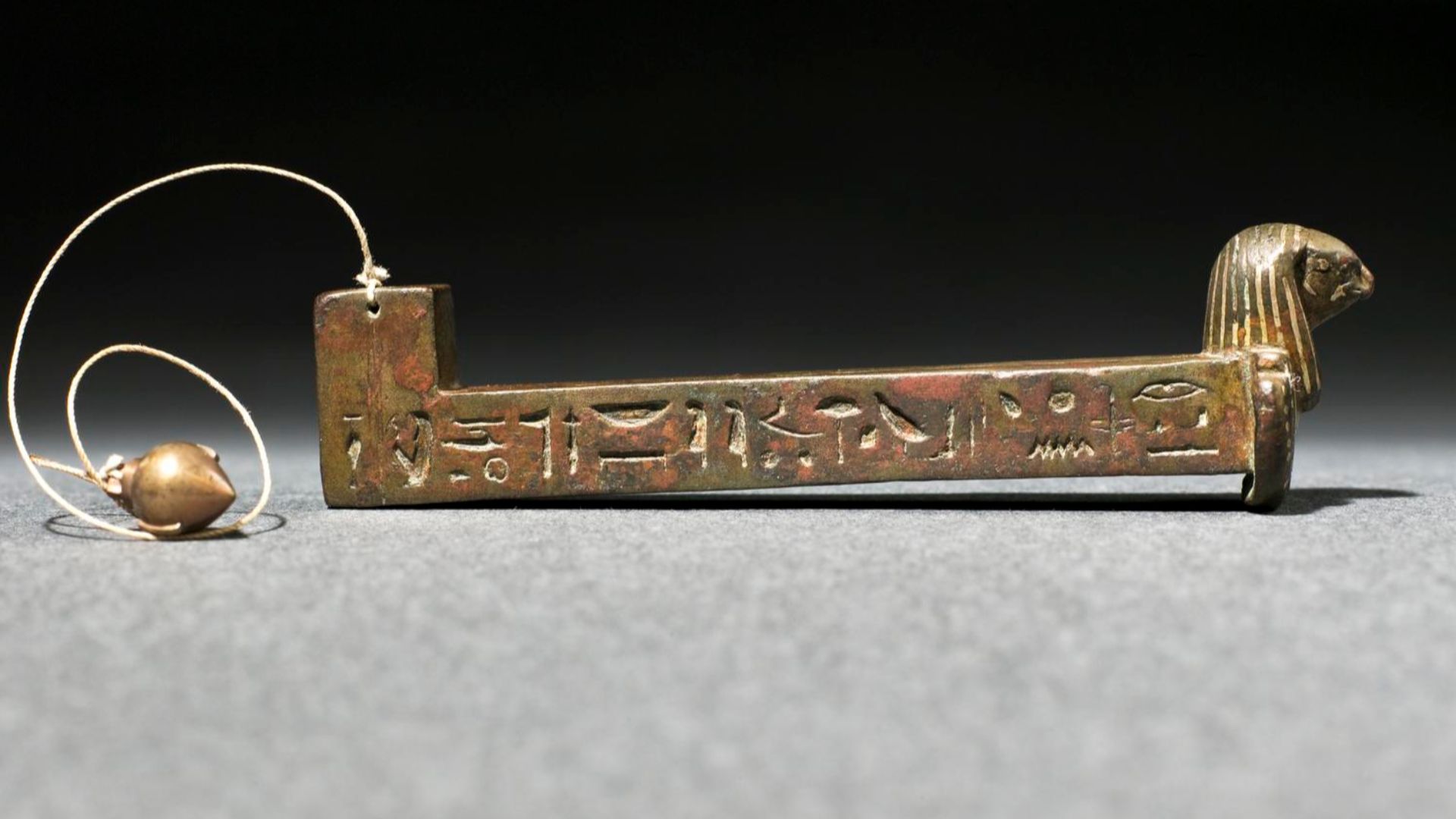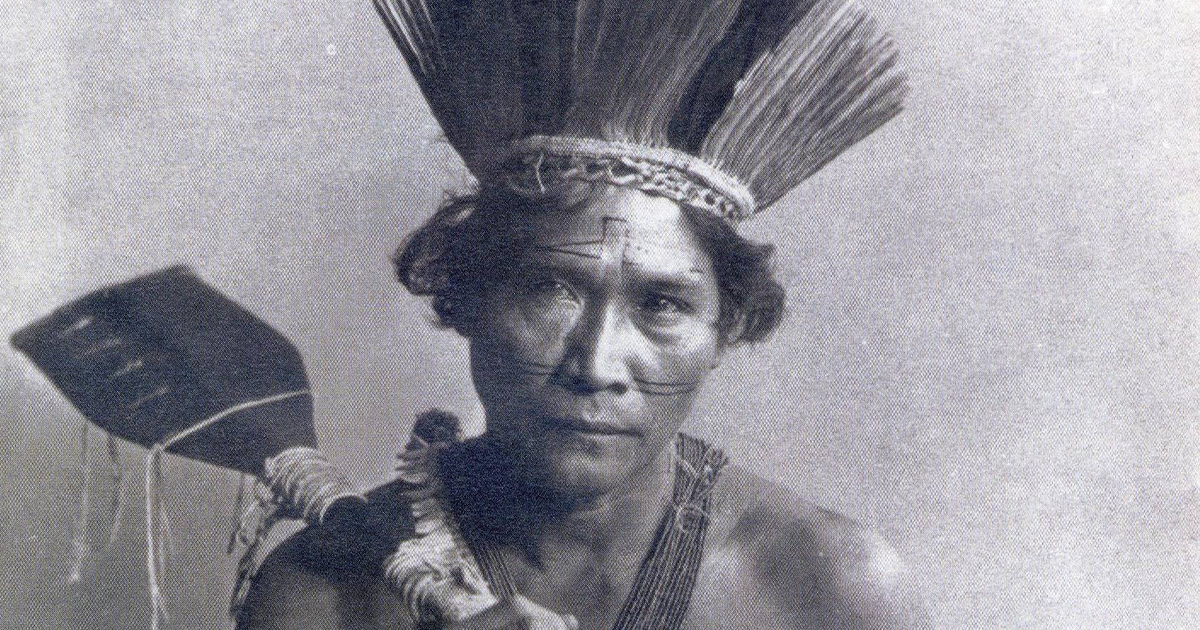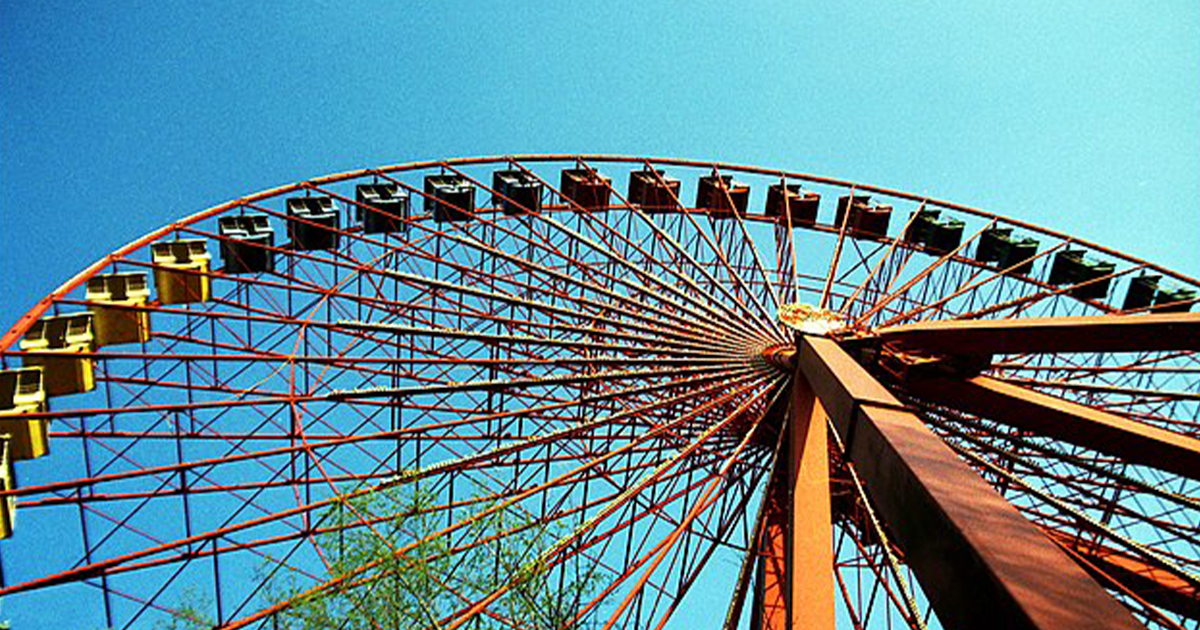A Temple That Watched The Sky
At Buto Temple, archaeologists found a structure with sun-aligned walls and carved tools. Its design suggests it supported star mapping by offering new insight into how ancient Egyptians measured time and ritual.

Hidden Beneath The Nile Delta's Surface
Layers of soil and time kept the Buto Temple out of sight for centuries because of agricultural expansion and Nile flooding. In Kafr El Sheikh, archaeologists finally traced faint surface mounds to what lay below.
 Faris knight, Wikimedia Commons
Faris knight, Wikimedia Commons
The First Clue Was A Sloped Mudbrick Formation
The first indication was an odd slant in the compacted mudbrick. Excavators noticed that the wall base was tilted inward and had an L-shaped configuration. That layout, now partially exposed, is designed to reflect celestial geometry rather than conventional architectural patterns.
 New Temple Found in Egypt " Temple of Buto ", Did You Know Discovery
New Temple Found in Egypt " Temple of Buto ", Did You Know Discovery
Sunlight Guided The Temple's Entrance
When the structure's eastern entrance came into view, its alignment raised eyebrows. It faces the sunrise directly and appears timed with the equinox. Since this orientation is common in solar temples, it was likely used to observe seasonal changes using the first light of day.
 New Temple Found in Egypt " Temple of Buto ", Did You Know Discovery
New Temple Found in Egypt " Temple of Buto ", Did You Know Discovery
Measuring Shadows With A Tiered Limestone Slab
A five-tiered limestone slab lay near the center of the platform. Each level was carved at regular intervals and cast shadow lines as the sun moved. The accuracy of these divisions suggests it functioned as a practical tool for tracking solar motion and possibly telling time.
 Archaeologists Discover Ancient Egyptian Astronomical Observatory, LendianTV
Archaeologists Discover Ancient Egyptian Astronomical Observatory, LendianTV
Markers Embedded In The Flooring Tracked Light Angles
Small limestone blocks were embedded at measured intervals along the temple floor. These stones aligned with the slab's shadow path and weren't decorative. Their placement suggests they marked specific solar angles during morning transitions, possibly tied to rituals or the agricultural calendar.
 Osama Shukir Muhammed Amin FRCP(Glasg), Wikimedia Commons
Osama Shukir Muhammed Amin FRCP(Glasg), Wikimedia Commons
An Elevated Platform Likely Housed Priests Or Tools
Toward the structure's southern wall, archaeologists uncovered the remains of a raised area framed by mudbrick contours. Its height and limited access hint at a purpose beyond gathering. The platform may have supported observation instruments or been reserved for elite ritual specialists.
 Whiteghost.ink, Wikimedia Commons
Whiteghost.ink, Wikimedia Commons
Carvings Showed Sunrise Across The Egyptian Seasons
A set of stone fragments bore carved lines radiating from a single axis, arranged to reflect seasonal sunrises. Researchers matched these angles with Akhet, Peret, and Shemu—the Nile-based agricultural seasons. The inscriptions suggest a system where time and farming were synchronized through celestial markers.
 Olaf Tausch, Wikimedia Commons
Olaf Tausch, Wikimedia Commons
Ritual Implements Sat Beside Measurement Tools
Next to the limestone shadow slab, excavators documented incense bowls and Osirian motifs etched into stone fragments. The proximity of sacred tools to functional instruments suggests that Egyptian priests did not separate science from ceremony. Observing the sky was both a holy and scheduled activity.
 Anonymous (Egypt)Unknown author, Wikimedia Commons
Anonymous (Egypt)Unknown author, Wikimedia Commons
Fragments Of A Star Clock Were Found Nearby
In the temple's southern quadrant, broken lengths of a plumb line tool called a merkhet were uncovered. This device, used to align with stars for nighttime observation, appeared alongside leveling weights. Their location suggests the temple's purpose extended beyond solar alignment into broader astral tracking.
 Science Museum Group, Wikimedia Commons
Science Museum Group, Wikimedia Commons
Fragments Of A Star Clock Were Found Nearby (Cont.)
Merkhets functioned by aligning their plumb line with a reference star and a vertical sighting tool. When used together, these tools helped priests establish cardinal directions and measure time at night. Their accuracy made them essential to temple operations, which required precise nocturnal rituals.
 Science Museum Group, Wikimedia Commons
Science Museum Group, Wikimedia Commons
A Statue, Possibly Osiris, Faced The Rising Sun
A headless basalt statue lay near the temple's eastern wall, positioned to face the sunrise. Though uninscribed, its form and posture resemble early images of Osiris, the Egyptian god of rebirth. The orientation supports theories that spiritual ritual and solar observation were purposefully linked.
 Eternal Space, Wikimedia Commons
Eternal Space, Wikimedia Commons
A Statue, Possibly Osiris, Faced The Rising Sun (Cont.)
The statue's style aligns with iconography labeled "Osirian", meaning related to Osiris and his cult. Osiris, often shown in mummy form with crossed arms, represented fertility and the afterlife. Its eastward stance may have symbolized rebirth with the morning sun by reinforcing sacred timing in temple design.
Buto Was A City Built Around Priestly Knowledge
Long before Alexandria rose to fame, Buto served as a key religious center in Lower Egypt. It hosted sacred temples and trained priests in celestial observation. Over time, political shifts and the emergence of new trade routes diminished its regional importance.
 Faris knight, Wikimedia Commons
Faris knight, Wikimedia Commons
Buto Was A City Built Around Priestly Knowledge (Cont.)
Buto was also associated with the goddess Wadjet, whose cult made the city a powerful religious capital in early dynastic Egypt. It played a central role in unification rituals and housed regional archives. These functions enhanced its priesthood's status and expanded its influence across the Nile Delta.
Egypt's 365-Day Solar Calendar Took Root Early
By the third millennium BCE, Egyptians were already observing the heliacal rising of Sirius—the first annual appearance of the star just before sunrise—to track the solar year. Their civil calendar had twelve 30-day months, plus five epagomenal days, which were added to complete the year.
 NASA, ESA and G. Bacon (STScI), Wikimedia Commons
NASA, ESA and G. Bacon (STScI), Wikimedia Commons
Egypt's 365-Day Solar Calendar Took Root Early (Cont.)
This calendar system, one of the earliest solar models, was used for civil administration and ritual timing. While it lacked leap years, its simplicity allowed consistent festival planning. The calendar later influenced Greek and Roman systems, though it remained uniquely tied to the Nile and celestial rhythms.
The Night Sky Was Divided Into 36 Decans
Egyptian priests used decans, star groupings that rose every ten days, to divide the night into intervals. These constellations shifted predictably and guided timekeeping in both temples and daily life. Tomb ceilings from the Middle and New Kingdom periods also display decan-based clocks.
 Einsamer Schütze, Wikimedia Commons
Einsamer Schütze, Wikimedia Commons
Orion And Sirius Were More Than Just Stars
Egyptians associated Sirius with Isis, the goddess of fertility and motherhood, and Orion with Osiris, the god of rebirth and the afterlife. The rising of Sirius marked the start of the Nile flood, while Orion's movements symbolized the soul's journey. Their positions guided myths and seasonal farming.
Orion And Sirius Were More Than Just Stars (Cont.)
Tomb ceilings, including that of Seti I, a pharaoh from Egypt's 19th Dynasty, depict Sirius and Orion as divine figures with cosmic roles. Texts like the Pyramid Texts describe Sirius as the sign and Orion as a guide for the soul. These stars shaped religious rites and beliefs.
 NASA, ESA, H. Bond (STScI), and M. Barstow (University of Leicester), Wikimedia Commons
NASA, ESA, H. Bond (STScI), and M. Barstow (University of Leicester), Wikimedia Commons
Priestly Roles Included Watching The Sky
Astronomy was an integral part of temple education, and priests were tasked with recording the rising of stars and the movements of shadows. In Heliopolis and similar centers, the training emphasized accuracy and ritual alignment. Observing the sky reinforced their authority as keepers of divine knowledge and timekeeping.
 Olaf Tausch, Wikimedia Commons
Olaf Tausch, Wikimedia Commons
Clepsydras Tracked Time At Night
Egyptian priests turned to clepsydras, or water clocks. These devices released water at a steady rate, allowing users to track the passing time in the darkness. Examples found in Karnak Temple show that astronomy continued at night through careful calibration and observation.
Temple Alignments Matched Celestial Events
Structures like Karnak and Abu Simbel weren't randomly placed. Their axes aligned with solar events such as solstices or equinoxes. These architectural choices enabled temples to serve as observatories, reinforcing the idea that sacred spaces were constructed in harmony with predictable cosmic cycles.
Festivals Followed Celestial Schedules
Major Egyptian festivals were tied to sky events. The Feast of Opet, a ceremonial parade honoring the god Amun, was timed to coincide with the Nile's annual flooding cycles. The reappearance of Sirius, seen before dawn, signaled the New Year and helped priests organize religious rituals and seasonal state and farming events.
 Marc Ryckaert, Wikimedia Commons
Marc Ryckaert, Wikimedia Commons
The Duat Was Mapped With Stars
In Egyptian belief, the Duat—the underworld—was not just spiritual but spatial. Tomb ceilings and coffin texts mapped their path using constellations. Specific star patterns marked gates and trials. This astral geography guided the soul's journey after death by linking myth with real celestial reference points.
Hymns Followed Celestial Rhythms
Morning rituals included chants timed to the rising of specific stars or sun points. These hymns followed the light's shift across temple walls. Though no musical notation survives, the coordination between sacred song and sky patterns reflects careful astronomical planning in Egyptian ceremonial practice.
 Marco Chemello (WMIT), Wikimedia Commons
Marco Chemello (WMIT), Wikimedia Commons
Ra's Journey Explained The Solar Cycle
As the sun crossed the sky, Egyptians believed Ra, the sun god, voyaged in a solar barque—a divine boat. By day, he crossed the heavens, and by night, he entered the Duat. This journey explained how light returned and why the world remained renewed each morning.
 AnonymousUnknown author, Wikimedia Commons
AnonymousUnknown author, Wikimedia Commons
Ra's Journey Explained The Solar Cycle (Cont.)
In tomb paintings and temple texts, Ra's journey was depicted as illustrating moral order and cosmic balance. The nightly voyage through the Duat involved battles against chaos, especially the serpent Apophis. His victorious return at dawn reaffirmed life and linked light transitions with divine triumph and the promise of renewal.
 Maler der Grabkammer der Nefertari, Wikimedia Commons
Maler der Grabkammer der Nefertari, Wikimedia Commons
The Sky Goddess Nut Gave Birth To The Stars
Egyptians imagined the sky as the body of Nut, a goddess, arched above the world. Each night, she swallowed the sun, and each dawn, she gave birth to it again. Her body held the stars by turning the heavens into a living map of divine motion.
 Hans Bernhard (Schnobby), Wikimedia Commons
Hans Bernhard (Schnobby), Wikimedia Commons
Pharaohs Justified Their Rule Through The Stars
Kings were seen as living links between the heavens and Earth. They timed coronations with the risings of stars and aligned structures with the sun's path. Every placement, from temple axes to monument design, served to affirm that royal authority followed the order observed in the sky.
 Gary Todd from Xinzheng, China, Wikimedia Commons
Gary Todd from Xinzheng, China, Wikimedia Commons
Rituals Couldn't Begin Without Celestial Signs
In many temples, morning rites depended on the first visible star. The heliacal rising of Sirius, seen just before dawn, was significant. Priests waited for this signal before offering prayers by ensuring the ritual followed the rhythm of the sky.
 Alice-astro, Wikimedia Commons
Alice-astro, Wikimedia Commons
Initiates Were Taught Astral Law In Secrecy
Students were selected to study sacred astronomy within temple schools. Instruction focused on watching the skies, marking key stellar patterns, and applying celestial rules to ritual practice. Knowledge was passed aloud and reserved for those the priesthood deemed capable of managing divine responsibility.
 Vyacheslav Argenberg, Wikimedia Commons
Vyacheslav Argenberg, Wikimedia Commons
Sacred Geometry Reflected Celestial Patterns
Temple architecture often followed patterns drawn from celestial timing. Builders applied ratios tied to lunar cycles and equinox points. At Dendera and Luxor, walls and columns mirror the rhythm of the sky by turning stone design into a map of cosmic order.
 Bernard Gagnon, Wikimedia Commons
Bernard Gagnon, Wikimedia Commons
Observatories Were Treated As Holy Ground
Access to sky-watching areas was limited. At sites like Buto, only senior priests were allowed near alignment tools or elevated sightlines. These zones were both functional and sanctified. Their exclusivity helped protect sacred knowledge that linked the patterns of heaven with Egypt's political and spiritual structure.
 Faris knight, Wikimedia Commons
Faris knight, Wikimedia Commons
Priests Interpreted Omens In The Heavens
An eclipse darkening midday or a comet streaking across the sky was never ignored. Priests viewed such events as signs, where the interpretation depended on context. When a sudden star shift warned of famine or unrest, they performed rituals designed to restore cosmic and earthly balance.
Cosmic Disorder Was A Real Fear
The Egyptians feared "isfet", a force of chaos that threatened "ma'at", their concept of cosmic order. Nightly rituals and astronomical tracking were designed to maintain that balance. Any deviation in star movement could signal spiritual instability by triggering priestly intervention through chants or recalibrated rituals.
Songs And Movement Imitated Planetary Order
In certain temples, hymns and dances weren't performed freely—they followed strict timing and alignment. Movement echoed planetary rhythm, while voices rose in sequence with stars or sun markers. These rituals blended choreography and sky observation to ensure the temple's acts resonated with the cosmos.
The Universe Was Regarded As A Clockwork System
To the ancient Egyptians, the cosmos operated with a dependable rhythm as stars shifted and solar motion remained steady. This system was not dismissed as superstition because these patterns reinforced a worldview in which a divine presence was revealed through consistent and observable celestial behavior.
 Original artist unknown, Wikimedia Commons
Original artist unknown, Wikimedia Commons
Egyptian Time Was Cyclical, Not Linear
Egyptian cosmology viewed time as a circle where existence moved through repeating stages. Natural events, such as the Nile flood and celestial movements like the appearance of Sirius or the sun's return, supported this view. These cycles shaped a worldview centered on eternal renewal rather than a fixed timeline.
 Original author unknown, Wikimedia Commons
Original author unknown, Wikimedia Commons
Every Temple Had A Clock In The Sky
Egyptian temples were often designed with the sky in mind and made architecture into a tool for timekeeping. By aligning structures with the sunrise or the rising of Sirius, priests could track seasonal changes. Temples from Karnak to Buto relied on this to measure time with cosmic precision.
 David Roberts, Wikimedia Commons
David Roberts, Wikimedia Commons
Egyptian Experts Led Excavation
Egypt's Supreme Council of Antiquities directed the Buto excavation. Using stratigraphic analysis and architectural mapping, they traced the mudbrick layout and uncovered the aligned stonework. This dig marked a shift toward Egyptian-led projects focusing on scientific documentation and cultural preservation.
 Kafr El Sheikh Museum 2020 by Experience Egypt
Kafr El Sheikh Museum 2020 by Experience Egypt
The Observatory's Function Surprised The Team
Initially, archaeologists expected to find standard temple remains, assuming the site served purely ceremonial functions. However, the angled walls and a sunlight-tracking slab that were uncovered pointed to the application of astronomy. This ultimately redefined Buto as an observatory of national significance beyond its regional role.
 Hans Bernhard (Schnobby), Wikimedia Commons
Hans Bernhard (Schnobby), Wikimedia Commons
The Observatory Was Nearly Lost To Agriculture
For years, the fertile soil around Buto supported crop farming that unknowingly covered its temple layers. Without early excavation permits or protection laws, plowing and irrigation gradually damaged exposed brickwork. Recent mapping efforts have prevented further loss of archaeological structures beneath cultivated land.
 Water Alternatives Photos, Wikimedia Commons
Water Alternatives Photos, Wikimedia Commons
Universities Are Studying Buto's Design Today
Buto now features in university programs focused on archaeoastronomy. Students in Egypt and Europe study its sun-aligned layout and explore how it tracks seasonal shifts. They also analyze its design as a bridge between ancient construction techniques and early ideas about the structure of the cosmos.
 Faris knight, Wikimedia Commons
Faris knight, Wikimedia Commons
Digital Reconstruction Is Rebuilding The Site
Teams are using 3D scanning to digitally preserve Buto's structure. These scans help document spatial alignments and produce reconstructions for research and public display. With improved imaging, researchers can simulate the movement of sunlight across temple floors without disturbing the site's remaining layers.
 Creative Tools from Halmdstad, Sweden, Wikimedia Commons
Creative Tools from Halmdstad, Sweden, Wikimedia Commons

















